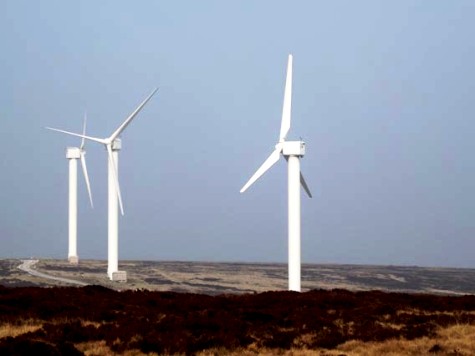A giant 67 turbine wind farm planned for the mountains overlooking Loch Ness will be an environmental disaster thanks to the sheer quantity of stone which will need to be quarried to construct it, according to the John Muir Trust. In addition, the Trust has warned that the turbines spell ecological disaster for the wet blanket peat-land which covers the area and acts as a huge carbon sink, the Sunday Times has reported.
Around one million people visit the picturesque Loch Ness, nestled in the highlands of Scotland each year, bringing about £25 million in revenue with them. Most are on the lookout for the infamous monster, but if Scottish and Southern Energy (SSE) get their way the tourists will have something else to look at: the Stronelairg wind farm – 67 turbines, each 443ft high, peppered across the Monadhlaith mountains overlooking the Loch.
According to SSE, the wind farm has the potential to generate enough power for 114,000 homes and bring £30million worth of benefits to the region. But conservation charity The John Muir Trust, named after the Scots-born founder of the modern conservation movement, has raised objections based on the environmental impact of the planned wind farm.
“Our objection to this development is not just to visual impact on the landscape of 67 giant turbines — it is about the ecological destruction of a massive area of upland,” said Stuart Brooks, chief executive of the JMT.
Approximately 22,000,000 cubic feet of stone will need to be quarried from the surrounding area to build the wind farm, used both in the construction of access roads and hard-standing at the base of the turbines, and also to build the heavy platforms required to support the turbines.
The figure is taken from SSE’s own calculations. In 2012, when 83 turbines were planned – roughly 20 percent more than is currently being considered, the company stated that 28 million cubic feet would be required.
But the John Muir Trust points out that even the revised figure would consist of nearly enough stone to build nine Berlin Walls. The Trust calculated that the wall, at 69 miles long, 13 feet high and six inches thick, used about 2 million cubic feet in its construction. If the stone which will go into the Stronelairg wind farm were used to construct an identical wall, it would be 600 miles long.
“Most people will be staggered to discover the sheer scale of the quarrying involved in building a mega-wind farm on the scale of Stronelairg,” said Brooks.
And the detrimental environmental impacts don’t stop there. “All of this disruption will take place on a site which consists of more than 70% wet blanket peatland — Scotland’s miniature version of the rainforest — which locks in 20 times as much carbon per acre as the average woodland. A serious strategy to cut greenhouse gases would include protection of Scotland’s natural carbon storehouses,” Brooks added.
A spokesman for the SSE insisted that the proposed site had been extensively surveyed, and that the wind farm will not affect deep peat areas.

COMMENTS
Please let us know if you're having issues with commenting.